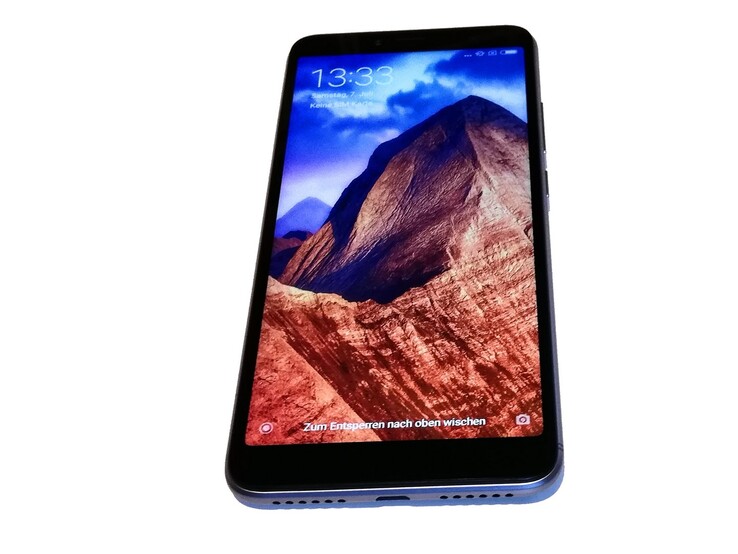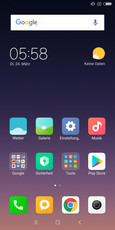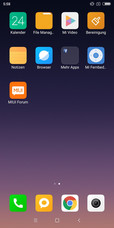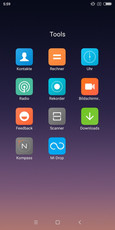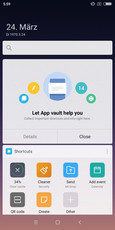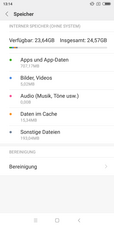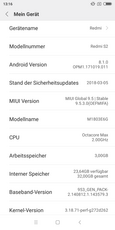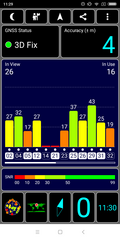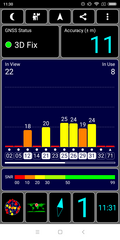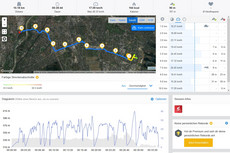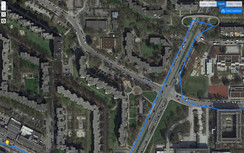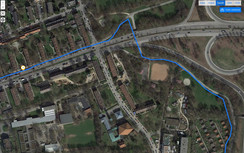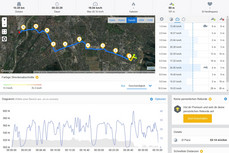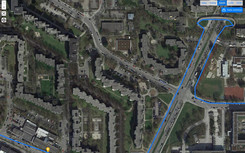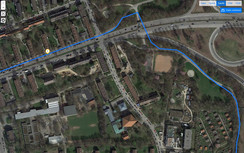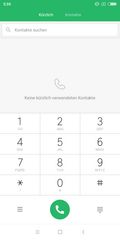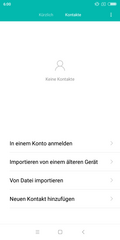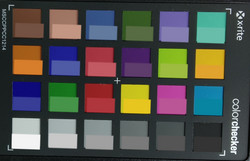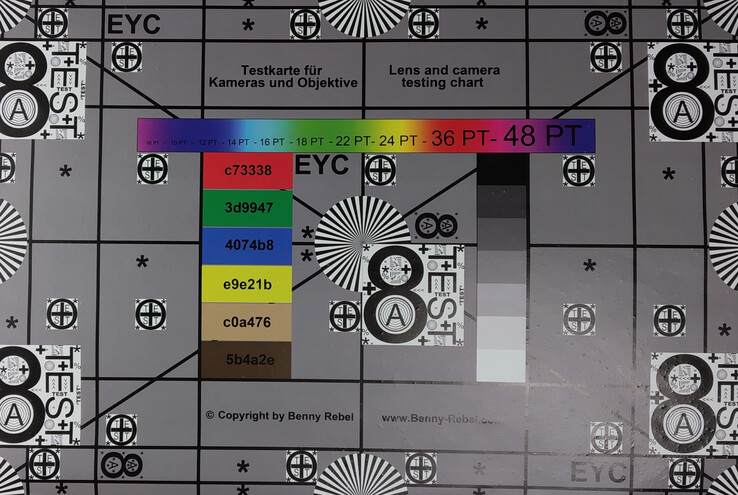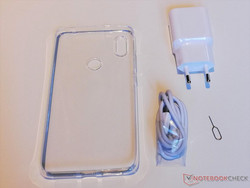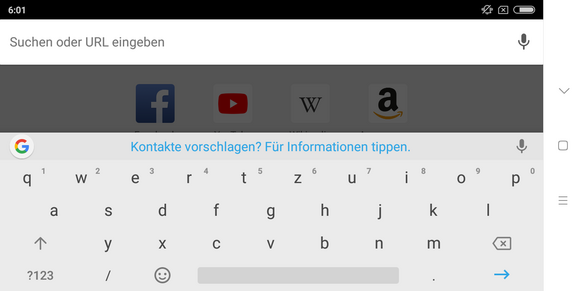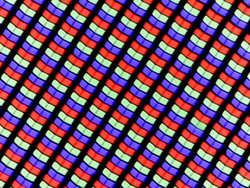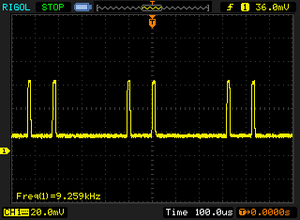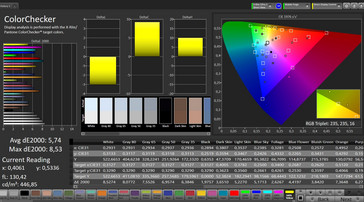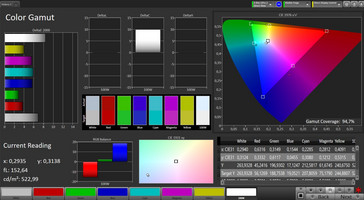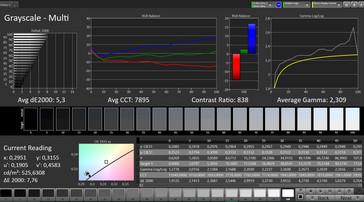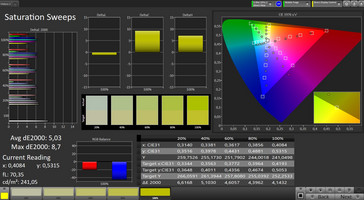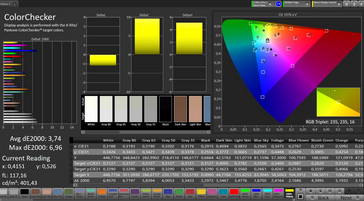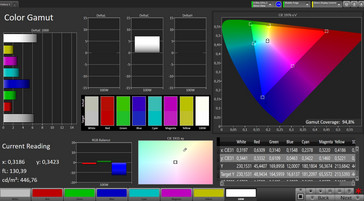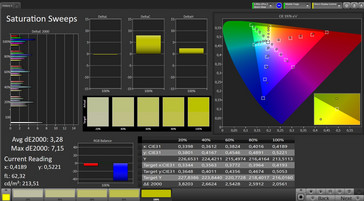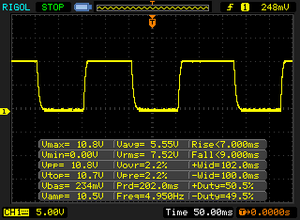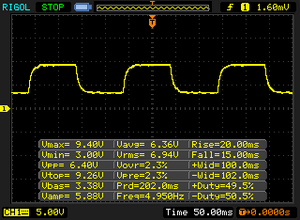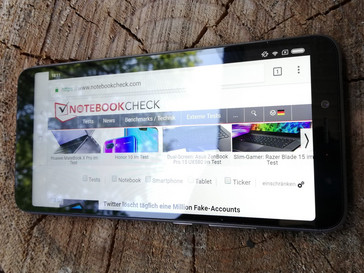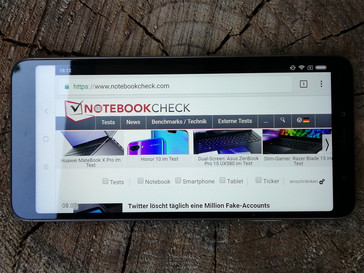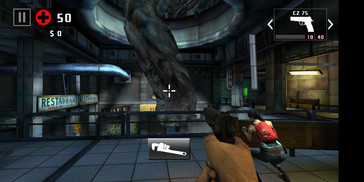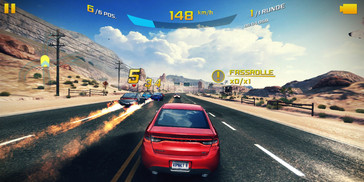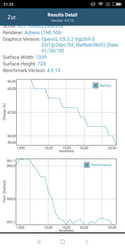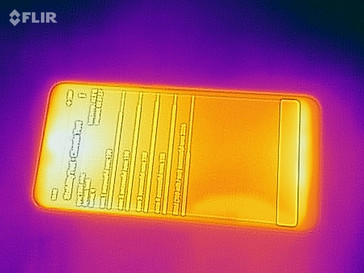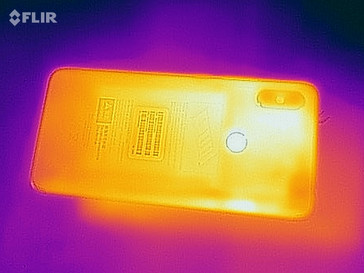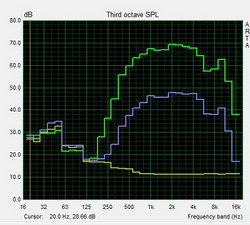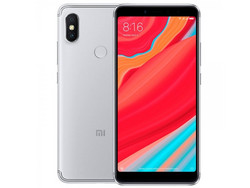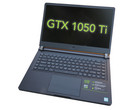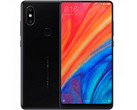Xiaomi Redmi S2 Smartphone Review
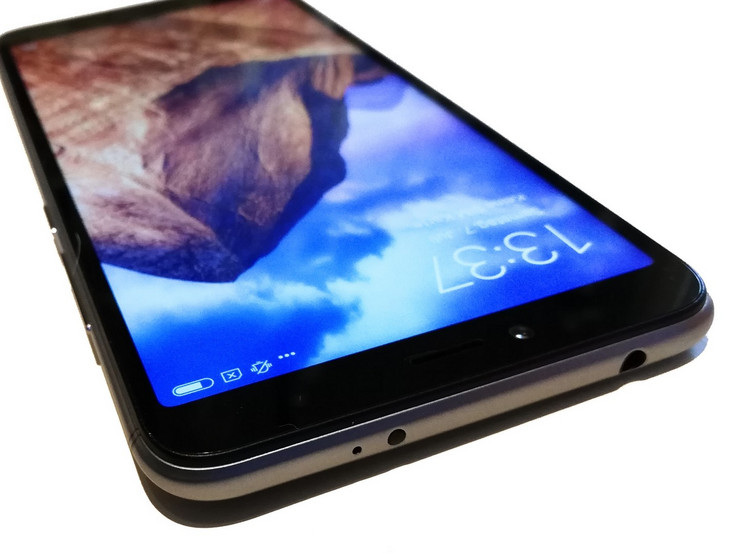
Now that Xiaomi has established itself in the European market, customers on this continent (+North America) have access to the company's sometimes cheap, sometimes powerful smartphones, or, occasionally, both at once. The smartphones in Xiaomi's Redmi series count among the manufacturer's cheaper models, though the configuration options for these devices range from the simple to the more high-caliber.
Our test device is Xiaomi's latest release, and its hardware configuration is primarily tailored to selfie-lovers. The 16 MP front camera purportedly takes good photos in any circumstance. With its 12+5 MP sensor, the main camera has no need to hide in the shadows either. The performance power necessary to run the Android Oreo system is provided by a Qualcomm Snapdragon 625 SoC and an Adreno 506 graphics unit. The CPU and GPU are joined by 4 GB of RAM and 32 GB of internal eMMC flash storage.
The Xiaomi Redmi S2 mid-range smartphone is currently available for a price of around 230 Euros (~$270; ~$220 in the US), landing it in a highly competitive price bracket. For our review, we will concentrate on comparable devices that offer a similar level of performance for a similar price. This includes Huawei's Y7 (2018), the Moto G6 Plus by Motorola, Samsung's Galaxy A6 and the Nokia 6 (2018), among others.
Case - Stable smartphone with a metal case
Xiaomi has opted to house the Redmi S2 in a metal case, available in gold or gray. It feels as if the display has been laid on top, as it protrudes from the smartphone's border by about a millimeter. Despite the rounded corners, the sides feel a little blocky. The manufacturing quality is solid,nothing to criticize here. All transitions between elements are even, and the buttons sit firmly in place.
Compared to the competition, the S2 is somewhat heavier than other 6-inch devices, although this can be traced back to the stable metal case. All other measurements are normal for smartphones of this size. On the back, the dual camera protrudes significantly from the case. Because the camera is located on the top left side, the user can feel around for the fingerprint sensor without smearing the lenses.
Connectivity - Xiaomi smartphone with infrared sensor
The Xiaomi Redmi S2 is equipped with Qualcomm's Snapdragon 625, an Adreno 506 graphics unit, 4 GB of RAM and 32 GB of internal storage. Users can expand the storage via a microSD card slot that can house the memory card and two nanoSIM cards simultaneously.
The microUSB port serves to charge the device and connects it with other accessories. In addition, users have access to a 3.5mm jack that enables the Xiaomi smartphone to be physically connected to a headset or external speakers.
The infrared sensor is somewhat of a special feature. Using the "Mi Remote" app, the smartphone can act as a remote control for TVs, sound systems or DVD players.
Software - Xiaomi Redmi S2 with MIUI Global 9.5
The Redmi S2 comes with Android Oreo version 8.1, inclusive of security updates dated from March 5th, 2018. Xiaomi has chosen to employ the company's own user interface: the MIUI Global 9.5. Alongside customized symbols, this UI also comes with its own phone and texting apps. The settings menu is also structured differently than on an Android system. The UI has a customized start screen on which users can choose to store a hodgepodge of app shortcuts and information of all kinds, although the standard Android start screen is also available for those who prefer it.
Aside from a Facebook app, there are no programs from third-parties on our test device. On the other hand, various Xiaomi tools (such as a compass app) come pre-installed and can only be deleted through the software menu. But the number of pre-installed apps is reasonable, and they provide useful functions. A microSD card only enlarges the storage space available for the user's own data; apps cannot be installed on it, and it is not possible to reformat it as internal storage. Buyers of this smartphone will also have to forgo the possibility of setting up multiple user accounts.
Communication and GPS - Redmi smartphone with worldwide LTE
The Xiaomi Redmi S2 has GSM, 3G and LTE at its command. The global version, available in Europe and the US, is equipped with LTE Cat. 9, meaning that the device can be used worldwide. Download rates reach up to 450 MBit/s; upload rates up to 50 MBit/s. Special versions for China and India are limited to the frequency bands common in those countries.
In our tests, the wireless reception was always good, and even in areas with poor network coverage, we had the sense that it maintained the connection longer than other devices. Users can rely on Bluetooth 4.2 and WLAN for communication over shorter distances. The latter only supports the standards b, g and n. With these limited options, the transfer rates in our tests were correspondingly low. The send and receive rates oscillated in the 50 MBit/s range, landing the Redmi S2 in last place among our list of devices for comparison.
| Networking | |
| iperf3 transmit AX12 | |
| Nokia 6 2018 | |
| Motorola Moto G6 Plus | |
| Samsung Galaxy A6 2018 | |
| Huawei Y7 2018 | |
| Xiaomi Redmi S2 | |
| iperf3 receive AX12 | |
| Motorola Moto G6 Plus | |
| Nokia 6 2018 | |
| Samsung Galaxy A6 2018 | |
| Huawei Y7 2018 | |
| Xiaomi Redmi S2 | |
We used the GPS Test app to determine how accurately the Xiaomi Redmi S2 could position us. In our tests, the built-in localization technologies enabled the smartphone to ascertain its position with an accuracy of up to 4 meters (~1ft) outdoors. Afterwards, the satellite connection remained stable in a closed room as well, allowing the user access to location services indoors, although the accuracy dropped to 11 meters (~40 feet).
On our compulsory bike ride, time and again, the GPS's imprecision caused the Xiaomi smartphone to record our location on the wrong side of the street or to clip curves. As a result, the Xiaomi Redmi S2 appears to be suited for simple navigation tasks. In instances where the user needs a high level of positioning accuracy, an external device is preferable.
Phone Function and Call Quality - Smartphone by Xiaomi with good call quality
For phone conversations, users of Xiaomi's Redmi S2 have access to the manufacturer's own telephone app. This app is similar to the standard Android app, although it lacks a Places tab. The number pad also enables the user to input letters, as was common on earlier cellphone models. This means that the telephone tab is not accompanied by a keyboard, only the number pad is available here. In the Contacts window, on the other hand, the keyboard stands at the ready. Users can search through their contact list as usual. Neither VoLTE nor VoWLAN is available in our test device's settings.
During conversations, the Redmi smartphone proves to be sufficiently loud to drown out background noise. The noise cancellation also enables the person on the other end to enjoy a phone call free of background interference. The sound quality is good on both sides, and we did not experience any crackling or buzzing emanating from our test device's earphone. Users can talk on the Xiaomi smartphone hands-free using the built-in speakerphone. The volume is a little louder than on the earphone, and speech is reproduced well. At maximum volume however, voices buzz somewhat.
Cameras - Xiaomi Redmi S2 selfie smartphone
Xiaomi has equipped the Redmi S2 with a 12+5 MP dual camera and a front camera with a 16 MP sensor for selfie-lovers. The latter takes good photos in normal daylight conditions indoors. The camera focuses on the center of the image and captures details very well. A subtle soft focus also smooths surfaces. Objects in the background, on the other hand, are somewhat blurry. An optional function automatically determines the gender and age of the person being photographed. The smartphone's estimate of this author's age was quite accurate; another test subject was categorized five years younger.
In good lighting, the Xiaomi Redmi S2's main camera also takes good shots that contain lots of detail and well-defined light and dark areas. On the edges however, things get a little bit blurry. This effect shows up in close-ups as well and even more prominently. The differences in brightness are also substantially more visible, which in turn means that the contrast within dark areas is a little too low. In poor lighting conditions, photos are light enough for objects to be recognizable, but not captured sharply. The camera app offers various filters and modes for different kinds of photos, although the manual settings options are limited to white balance and ISO. The video recording function has similar limitations, but the good image stabilizer enables the smartphone to record jitter-free videos.
We used the ColorChecker Passport program to test the color accuracy of the Xiaomi Redmi S2's camera. The test revealed mixed results. While most colors are reproduced too darkly, yellow and green tones look a little too light. The grayscale and blacks are also too dark.
In a controlled lighting environment, the Redmi S2's camera performance is good. Fine structures and details are easily recognizable and sharp, even around the image border. Colors on the other hand, do not look particularly bold, and overall the photo is a little too dark.
Accessories and Warranty - Protective silicone cover for the Xiaomi Redmi S2
The Redmi S2's box contents include a USB power supply with matching microUSB cable, a SIM ejector tool, and a protective cover made of silicone. Additional accessories can be purchased on the manufacturer's website (among other places). The online catalog is not limited to accessories customized for our test device. Xiaomi's site also sells anything that can be connected to the smartphone; smart watches, external speakers and much more.
Buyers of the Xiaomi Redmi S2 will receive a 24-month warranty in the EU. Please see our Guarantees, Return policies and Warranties FAQ for country-specific information.
Input Devices and Operation - Redmi S2 with Google keyboard
For text input, users of the Xiaomi Redmi S2 have access to Google's standard keyboard app, GBoard. This keyboard enables users to type texts quickly and easily. While typing, the touchscreen reacts somewhat slowly—but reliably nevertheless. Swiping on the other hand, is often not recognized or only generates a reaction after a short delay. The position sensor experiences a similar lag. If the user turns the device, it takes a moment before the image content turns in the corresponding direction.
Display - 6-inch smartphone from Xiaomi
The Xiaomi Redmi S2's display consists of a 6-inch IPS panel with a resolution of 1440x720 pixels in 18:9 format. Compared to other devices in this price bracket, the resolution is acceptable. With an average brightness level of 483 cd/m², our test device lands a good spot in the middle range between the rest of the devices on our comparison list.
| |||||||||||||||||||||||||
Brightness Distribution: 90 %
Contrast: 771:1 (Black: 0.65 cd/m²)
ΔE ColorChecker Calman: 5.74 | ∀{0.5-29.43 Ø4.77}
ΔE Greyscale Calman: 5.3 | ∀{0.09-98 Ø5}
94.7% sRGB (Calman 2D)
Gamma: 2.309
CCT: 7895 K
| Xiaomi Redmi S2 IPS, 1440x720, 6" | Huawei Y7 2018 IPS, 1440x720, 6" | Motorola Moto G6 Plus IPS, 2160x1080, 5.9" | Nokia 6 2018 IPS, 1920x1080, 5.5" | Samsung Galaxy A6 2018 Super AMOLED, 1480x720, 5.6" | |
|---|---|---|---|---|---|
| Screen | 13% | 38% | -14% | 18% | |
| Brightness middle (cd/m²) | 501 | 393 -22% | 761 52% | 417 -17% | 453 -10% |
| Brightness (cd/m²) | 483 | 365 -24% | 723 50% | 421 -13% | 459 -5% |
| Brightness Distribution (%) | 90 | 85 -6% | 90 0% | 88 -2% | 93 3% |
| Black Level * (cd/m²) | 0.65 | 0.29 55% | 0.69 -6% | 0.61 6% | |
| Contrast (:1) | 771 | 1355 76% | 1103 43% | 684 -11% | |
| Colorchecker dE 2000 * | 5.74 | 5.28 8% | 2.4 58% | 6.1 -6% | 2.6 55% |
| Colorchecker dE 2000 max. * | 8.53 | 9 -6% | 5.2 39% | 11.2 -31% | 9.2 -8% |
| Greyscale dE 2000 * | 5.3 | 4.2 21% | 1.8 66% | 7.1 -34% | 1.6 70% |
| Gamma | 2.309 95% | 2.6 85% | 2.21 100% | 2.16 102% | 2.07 106% |
| CCT | 7895 82% | 7086 92% | 6312 103% | 8362 78% | 6356 102% |
* ... smaller is better
Screen Flickering / PWM (Pulse-Width Modulation)
| Screen flickering / PWM not detected | |||
In comparison: 53 % of all tested devices do not use PWM to dim the display. If PWM was detected, an average of 8081 (minimum: 5 - maximum: 343500) Hz was measured. | |||
Further measurements of the Redmi S2's display reveal a mediocre contrast ratio of 771:1 and a black value of 0.65. In practical use, these results come to expression as colors that are not particularly clearly distinguished from each other, and a faint gray cast that overlays the entire image. Black tones also look somewhat pale.
In terms of screen content display, users of the Xiaomi smartphone can choose between various color profiles. The standard mode is proportionally higher in blue tones, while red tones are a little underrepresented. In the "Warm" color profile, the primary colors are somewhat more balanced and the blue tones significantly reduced. The proportion of red tones is increased by a small margin, leaving the image with an overall warmer feel.
Display Response Times
| ↔ Response Time Black to White | ||
|---|---|---|
| 16 ms ... rise ↗ and fall ↘ combined | ↗ 7 ms rise | |
| ↘ 9 ms fall | ||
| The screen shows good response rates in our tests, but may be too slow for competitive gamers. In comparison, all tested devices range from 0.1 (minimum) to 240 (maximum) ms. » 36 % of all devices are better. This means that the measured response time is better than the average of all tested devices (20.2 ms). | ||
| ↔ Response Time 50% Grey to 80% Grey | ||
| 35 ms ... rise ↗ and fall ↘ combined | ↗ 20 ms rise | |
| ↘ 15 ms fall | ||
| The screen shows slow response rates in our tests and will be unsatisfactory for gamers. In comparison, all tested devices range from 0.165 (minimum) to 636 (maximum) ms. » 48 % of all devices are better. This means that the measured response time is worse than the average of all tested devices (31.6 ms). | ||
Outdoors, the Xiaomi Redmi S2 can be used without any problems. Of course, shady spots are always preferable, given that the brightness is not intense enough to overcome reflections from the surrounding environment. The screen content is still visible despite reflections and direct sunlight, but it is considerably more difficult than in more moderate lighting conditions.
The Xiaomi Redmi S2's IPS panel has extremely stable viewing angles. From every angle imaginable, the display content on our test device is clearly visible. As long as there are no reflections from the surrounding environment obscuring the display, the user always has a clear view of the smartphone's screen content, even from less than ideal vantage points.
Performance - Good system performance on the Redmi S2
Xiaomi has chosen to equip the Redmi S2 with Qualcomm's Snapdragon 625 SoC and an Adreno 506 graphics unit. The two processors are supported by 4 GB of RAM and 32 GB of eMMC flash storage. This hardware configuration is appropriate for a solid mid-range smartphone, and this or similar configurations can be found in other smartphones within this price bracket. The Snapdragon 625 was released in February 2016 and offers 8 cores at a clock speed of 2 GHz. The 14nm manufacturing process enables the chip to run with good energy efficiency, which in turn has a positive effect on the smartphone's battery life.
Compared to the other devices in our comparison list, the Redmi S2 secures a good spot in the middle range. The Xiaomi smartphone performs somewhat better or somewhat worse than we would have expected in some individual benchmarks, but overall, it fulfilled our expectations of a device with this hardware configuration.
| AnTuTu v6 - Total Score | |
| Nokia 6 2018 | |
| Motorola Moto G6 Plus | |
| Average Qualcomm Snapdragon 625 (59867 - 68348, n=17) | |
| Xiaomi Redmi S2 | |
| Samsung Galaxy A6 2018 | |
| Huawei Y7 2018 | |
| AnTuTu v7 - Total Score | |
| Nokia 6 2018 | |
| Motorola Moto G6 Plus | |
| Average Qualcomm Snapdragon 625 (65759 - 81789, n=6) | |
| Samsung Galaxy A6 2018 | |
| Huawei Y7 2018 | |
| Xiaomi Redmi S2 | |
| PCMark for Android | |
| Work performance score | |
| Average Qualcomm Snapdragon 625 (4596 - 7846, n=16) | |
| Motorola Moto G6 Plus | |
| Nokia 6 2018 | |
| Xiaomi Redmi S2 | |
| Huawei Y7 2018 | |
| Samsung Galaxy A6 2018 | |
| Work 2.0 performance score | |
| Average Qualcomm Snapdragon 625 (4626 - 5558, n=14) | |
| Motorola Moto G6 Plus | |
| Xiaomi Redmi S2 | |
| Nokia 6 2018 | |
| Huawei Y7 2018 | |
| Samsung Galaxy A6 2018 | |
| GFXBench 3.1 | |
| on screen Manhattan ES 3.1 Onscreen | |
| Average of class Smartphone (11 - 166, n=155, last 2 years) | |
| Xiaomi Redmi S2 | |
| Nokia 6 2018 | |
| Huawei Y7 2018 | |
| Motorola Moto G6 Plus | |
| Samsung Galaxy A6 2018 | |
| Average Qualcomm Snapdragon 625 (3.1 - 14, n=17) | |
| 1920x1080 Manhattan ES 3.1 Offscreen | |
| Average of class Smartphone (8.4 - 413, n=154, last 2 years) | |
| Nokia 6 2018 | |
| Motorola Moto G6 Plus | |
| Average Qualcomm Snapdragon 625 (3.5 - 14, n=17) | |
| Xiaomi Redmi S2 | |
| Huawei Y7 2018 | |
| Samsung Galaxy A6 2018 | |
In the browser benchmarks too, the Redmi S2 fulfilled our expectations. The test results place the Xiaomi smartphone exactly in the middle of our comparison list. In everyday use, these results come to expression as smooth browser operation and short load times. Websites with lots of media content present no challenge for our test device.
| JetStream 1.1 - Total Score | |
| Nokia 6 2018 (Browser: Chrome 65) | |
| Motorola Moto G6 Plus (Chrome 66) | |
| Average Qualcomm Snapdragon 625 (21.3 - 31.8, n=17) | |
| Xiaomi Redmi S2 (Chrome 67) | |
| Samsung Galaxy A6 2018 (Chrome 64.0.3282.137) | |
| Huawei Y7 2018 (Chrome 66) | |
| Octane V2 - Total Score | |
| Average of class Smartphone (2228 - 126661, n=194, last 2 years) | |
| Motorola Moto G6 Plus (Chrome 66) | |
| Nokia 6 2018 (Browser: Chrome 65) | |
| Xiaomi Redmi S2 (Chrome 67) | |
| Average Qualcomm Snapdragon 625 (3781 - 4979, n=17) | |
| Samsung Galaxy A6 2018 (Chrome 64.0.3282.137) | |
| Huawei Y7 2018 (Chrome 66) | |
| Mozilla Kraken 1.1 - Total | |
| Huawei Y7 2018 (Chrome 66) | |
| Samsung Galaxy A6 2018 (Chrome 64.0.3282.137) | |
| Xiaomi Redmi S2 (Chrome 67) | |
| Nokia 6 2018 (Browser: Chrome 65) | |
| Motorola Moto G6 Plus (Chrome 66) | |
| Average Qualcomm Snapdragon 625 (8028 - 12194, n=17) | |
| Average of class Smartphone (257 - 28190, n=154, last 2 years) | |
| WebXPRT 2015 - Overall | |
| Nokia 6 2018 | |
| Motorola Moto G6 Plus (Chrome 66) | |
| Xiaomi Redmi S2 (Chrome 67) | |
| Average Qualcomm Snapdragon 625 (60 - 113, n=12) | |
| Samsung Galaxy A6 2018 (Chrome 64.0.3282.137) | |
| Huawei Y7 2018 (Chrome 66) | |
* ... smaller is better
The Xiaomi Redmi S2 offers users 32 GB of internal storage, 25 GB of which is available for personal data and apps. Alternatively, a version of the Redmi S2 with 64 GB of storage is available for purchase. In our benchmark test, the storage medium performed as one would expect, given that this is a solid mid-range smartphone. The write and read rates fall, once again, exactly in the middle of the competition.
The built-in microSD card reader performs less well, but not badly. The card reader falls just short of the rest of the devices in our comparison list, but even so, it managed good data transfer rates with our Toshiba Exceria Pro M501 reference memory card.
| Xiaomi Redmi S2 | Huawei Y7 2018 | Motorola Moto G6 Plus | Nokia 6 2018 | Samsung Galaxy A6 2018 | Average 32 GB eMMC Flash | Average of class Smartphone | |
|---|---|---|---|---|---|---|---|
| AndroBench 3-5 | -25% | 17% | -16% | -27% | -22% | 778% | |
| Sequential Read 256KB (MB/s) | 261.4 | 256 -2% | 286.6 10% | 272.6 4% | 208.4 -20% | 242 ? -7% | 2235 ? 755% |
| Sequential Write 256KB (MB/s) | 117.7 | 71.5 -39% | 216.1 84% | 118.3 1% | 100.6 -15% | 100.5 ? -15% | 1871 ? 1490% |
| Random Read 4KB (MB/s) | 52.5 | 38.8 -26% | 58.4 11% | 38.78 -26% | 24.54 -53% | 43.1 ? -18% | 297 ? 466% |
| Random Write 4KB (MB/s) | 68.7 | 9.5 -86% | 62.8 -9% | 15.3 -78% | 10.68 -84% | 22.3 ? -68% | 343 ? 399% |
| Sequential Read 256KB SDCard (MB/s) | 81.8 ? | 85 4% | 83.7 ? 2% | 83.4 ? 2% | 81.4 ? 0% | 71.8 ? -12% | |
| Sequential Write 256KB SDCard (MB/s) | 60.9 ? | 61.5 1% | 62.1 ? 2% | 61.3 ? 1% | 65.7 ? 8% | 52.9 ? -13% |
Games - Xiaomi phone good for playing games
In the Xiaomi Redmi S2, an Adreno 506 graphics unit provides the performance necessary for games and 3D applications to run smoothly. This mid-range GPU is already somewhat old, but it has no problem rendering more graphics-heavy games. Users only have to accept that load times may be somewhat longer.
The games we tested with the GameBench software, “Dead Trigger 2” and “Asphalt 8”, presented no challenge for the Redmi S2, even at higher graphics settings. However, the somewhat slow position sensor substantially impaired the smartphone's ability to run the games smoothly, and over extended periods, the level of friction between the screen and the user's fingertips is a little too high.
| Asphalt 8: Airborne | |||
| Settings | Value | ||
| high | 30 fps | ||
| very low | 30 fps | ||
| Dead Trigger 2 | |||
| Settings | Value | ||
| high | 30 fps | ||
Emissions - Redmi S2 remains relatively cool
The Redmi S2 hardly warms up at all in operation. In idle mode, we measured maximum surface temperatures of just over 28°C (~82.4°F). Under load, these temperatures rose somewhat and did end up crossing the 40°C (104°F) mark. In everyday use, the smartphone feels slightly warm, but never grows hot.
The GFX Bench benchmark's heavy load test, Manhattan 3.1, also showed that our test device's performance only dropped minimally over the course of the test. The smartphone reached 861 FPS in the beginning; after 30 cycles, the frame rate still held at a good 851. It is thus reasonable to assume that system performance will not be limited as a result of high temperatures.
(±) The maximum temperature on the upper side is 41.4 °C / 107 F, compared to the average of 35.2 °C / 95 F, ranging from 21.9 to 247 °C for the class Smartphone.
(±) The bottom heats up to a maximum of 40.2 °C / 104 F, compared to the average of 34 °C / 93 F
(+) In idle usage, the average temperature for the upper side is 27.5 °C / 82 F, compared to the device average of 32.9 °C / 91 F.
Speakers
The Redmi S2's speakers reach a moderate volume and tend to produce faint buzzing and crackling sounds at the highest setting. While voices sound loud and clear, the sound quality is not good enough for listening to music, for example. The overrepresented mid-tones and strikingly underrepresented high and low tones leave the sound lacking in fine details. Compared to other smartphones in this price bracket however, the quality of the speakers is still good.
A 3.5mm jack enables the user to connect external audio devices. The jack is somewhat tight and fails to lock a plug into place; instead it appears that the tightness itself prevents the plug from falling out.
Xiaomi Redmi S2 audio analysis
(±) | speaker loudness is average but good (78.2 dB)
Bass 100 - 315 Hz
(-) | nearly no bass - on average 31.6% lower than median
(±) | linearity of bass is average (11.5% delta to prev. frequency)
Mids 400 - 2000 Hz
(±) | higher mids - on average 5.7% higher than median
(+) | mids are linear (6.7% delta to prev. frequency)
Highs 2 - 16 kHz
(±) | higher highs - on average 5.4% higher than median
(+) | highs are linear (5.1% delta to prev. frequency)
Overall 100 - 16.000 Hz
(±) | linearity of overall sound is average (29% difference to median)
Compared to same class
» 76% of all tested devices in this class were better, 3% similar, 21% worse
» The best had a delta of 11%, average was 35%, worst was 134%
Compared to all devices tested
» 87% of all tested devices were better, 2% similar, 11% worse
» The best had a delta of 4%, average was 24%, worst was 134%
Samsung Galaxy A6 2018 audio analysis
(+) | speakers can play relatively loud (87 dB)
Bass 100 - 315 Hz
(-) | nearly no bass - on average 26.5% lower than median
(±) | linearity of bass is average (7.6% delta to prev. frequency)
Mids 400 - 2000 Hz
(+) | balanced mids - only 2.8% away from median
(+) | mids are linear (5.5% delta to prev. frequency)
Highs 2 - 16 kHz
(+) | balanced highs - only 3.5% away from median
(+) | highs are linear (6.2% delta to prev. frequency)
Overall 100 - 16.000 Hz
(±) | linearity of overall sound is average (17.4% difference to median)
Compared to same class
» 12% of all tested devices in this class were better, 8% similar, 80% worse
» The best had a delta of 11%, average was 35%, worst was 134%
Compared to all devices tested
» 32% of all tested devices were better, 8% similar, 59% worse
» The best had a delta of 4%, average was 24%, worst was 134%
Battery Life - Xiaomi smartphone with long battery life
The Xiaomi Redmi S2 is not a particularly energy-saving device. According to our measurements, the Redmi phone's energy usage significantly exceeds that of the competition. Even in idle mode, we measured a power draw of at least 2 watts. Under load, the usage rose to a maximum of 6.7 watts. Nevertheless, the 10-watt power supply that comes with the device can provide the energy necessary to charge and run the smartphone. The power supply fully charges the 3080 mAh battery in just over 2 hours.
| Off / Standby | |
| Idle | |
| Load |
|
Key:
min: | |
| Xiaomi Redmi S2 3080 mAh | Huawei Y7 2018 3000 mAh | Motorola Moto G6 Plus 3200 mAh | Nokia 6 2018 3000 mAh | Samsung Galaxy A6 2018 3000 mAh | Average Qualcomm Snapdragon 625 | Average of class Smartphone | |
|---|---|---|---|---|---|---|---|
| Power Consumption | 26% | 41% | 44% | 48% | 31% | 7% | |
| Idle Minimum * (Watt) | 2 | 0.9 55% | 0.5 75% | 0.67 66% | 0.81 59% | 0.981 ? 51% | 0.847 ? 58% |
| Idle Average * (Watt) | 2.6 | 1.9 27% | 1.78 32% | 1.76 32% | 1.26 52% | 1.985 ? 24% | 1.446 ? 44% |
| Idle Maximum * (Watt) | 3.5 | 2.3 34% | 1.81 48% | 1.78 49% | 1.3 63% | 2.27 ? 35% | 1.63 ? 53% |
| Load Average * (Watt) | 4.6 | 4.7 -2% | 3.3 28% | 2.82 39% | 2.87 38% | 3.51 ? 24% | 6.95 ? -51% |
| Load Maximum * (Watt) | 6.7 | 5.7 15% | 5.14 23% | 4.56 32% | 4.82 28% | 5.38 ? 20% | 11.3 ? -69% |
* ... smaller is better
Battery Life
In our battery tests, the Xiaomi Redmi S2's battery proves to have real stamina. In our WLAN test, designed to simulate everyday use, the smartphone ran for almost 19 hours. Our test device's battery even ran a continuous video loop for over 15 hours before cutting out. Compared to other devices in its price range, the Redmi S2's performance here is very good, securing it the top spot in our comparison list.
| Xiaomi Redmi S2 3080 mAh | Huawei Y7 2018 3000 mAh | Motorola Moto G6 Plus 3200 mAh | Nokia 6 2018 3000 mAh | Samsung Galaxy A6 2018 3000 mAh | |
|---|---|---|---|---|---|
| Battery runtime | 35% | 89% | 86% | 61% | |
| H.264 (h) | 15.2 | 11.5 -24% | 9 -41% | 11.3 -26% | 14.5 -5% |
| WiFi v1.3 (h) | 18.8 | 10.4 -45% | 11.7 -38% | 15.7 -16% | 10.1 -46% |
| Load (h) | 1.5 | 4.1 173% | 6.7 347% | 6 300% | 5 233% |
| Reader / Idle (h) | 21.8 | 30.8 | 30.6 | 26.9 |
Pros
Cons
Verdict - Xiaomi Redmi S2: Top choice for selfie-lovers
In our tests, the Redmi S2 proves to be a good mid-range smartphone that can stride boldly into the ranks of the competition. To attract selfie-lovers, Xiaomi has equipped our test device with a very good front camera; a unique selling point compared to its competitors. The main camera too, is good for the occasional snapshot.
The benchmark results attest to the smartphone's good system performance that should be adequate for nearly any application scenario. Bargain hunters and those who like devices with solid, basic hardware will be pleased with Xiaomi's latest release in the Redmi series and can confidently snatch up this deal.
The Xiaomi Redmi S2 is a good mid-range smartphone. With its high-resolution front camera, the device is not just suited to selfie-lovers; thanks to its good system performance, it may appeal to other interested customers as well.
Xiaomi Redmi S2
- 07/11/2018 v6 (old)
Mike Wobker


